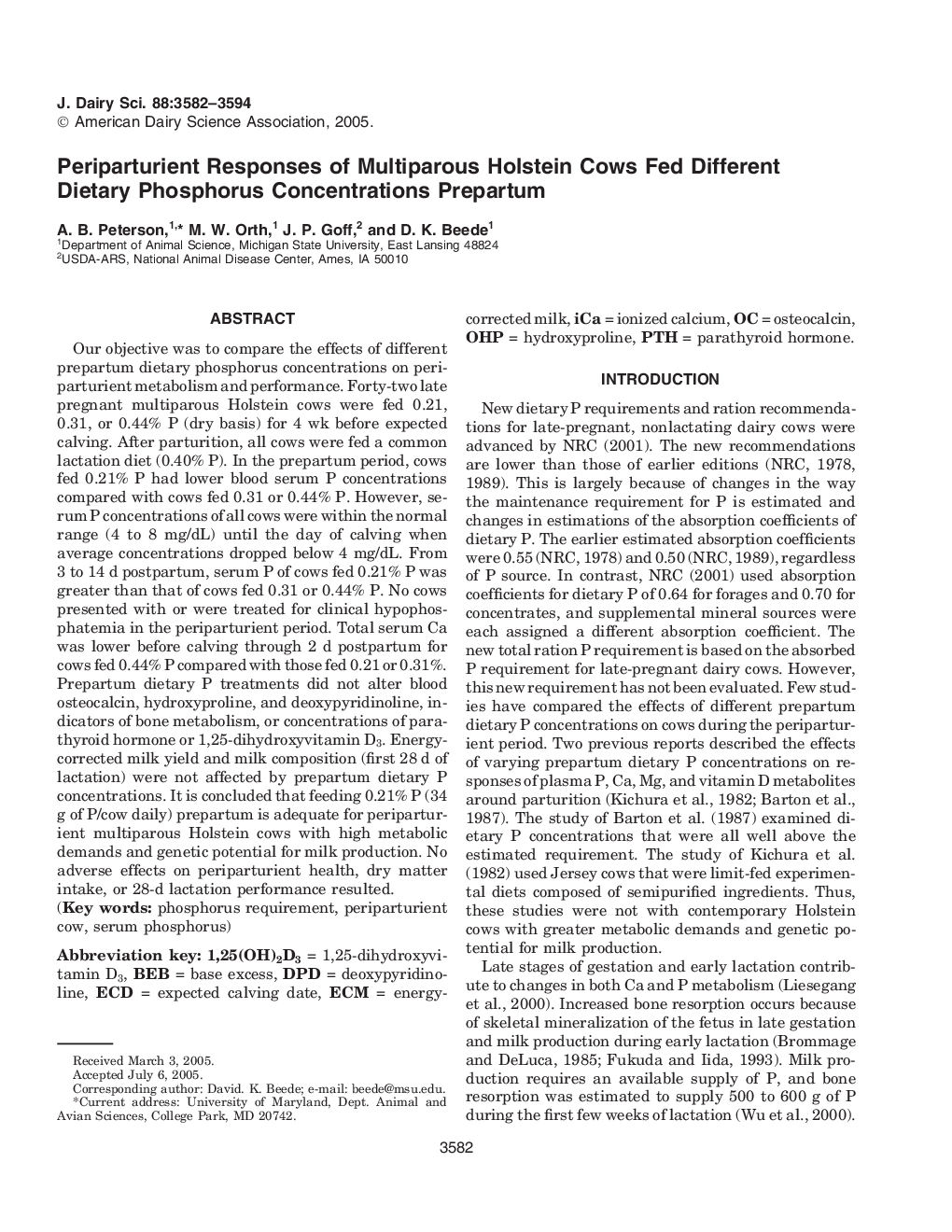| Article ID | Journal | Published Year | Pages | File Type |
|---|---|---|---|---|
| 2441718 | Journal of Dairy Science | 2005 | 13 Pages |
Abstract
Our objective was to compare the effects of different prepartum dietary phosphorus concentrations on periparturient metabolism and performance. Forty-two late pregnant multiparous Holstein cows were fed 0.21, 0.31, or 0.44% P (dry basis) for 4 wk before expected calving. After parturition, all cows were fed a common lactation diet (0.40% P). In the prepartum period, cows fed 0.21% P had lower blood serum P concentrations compared with cows fed 0.31 or 0.44% P. However, serum P concentrations of all cows were within the normal range (4 to 8Â mg/dL) until the day of calving when average concentrations dropped below 4Â mg/dL. From 3 to 14 d postpartum, serum P of cows fed 0.21% P was greater than that of cows fed 0.31 or 0.44% P. No cows presented with or were treated for clinical hypophosphatemia in the periparturient period. Total serum Ca was lower before calving through 2 d postpartum for cows fed 0.44% P compared with those fed 0.21 or 0.31%. Prepartum dietary P treatments did not alter blood osteocalcin, hydroxyproline, and deoxypyridinoline, indicators of bone metabolism, or concentrations of parathyroid hormone or 1,25-dihydroxyvitamin D3. Energy-corrected milk yield and milk composition (first 28 d of lactation) were not affected by prepartum dietary P concentrations. It is concluded that feeding 0.21% P (34Â g of P/cow daily) prepartum is adequate for periparturient multiparous Holstein cows with high metabolic demands and genetic potential for milk production. No adverse effects on periparturient health, dry matter intake, or 28-d lactation performance resulted.
Keywords
Related Topics
Life Sciences
Agricultural and Biological Sciences
Animal Science and Zoology
Authors
A.B. Peterson, M.W. Orth, J.P. Goff, D.K. Beede,
